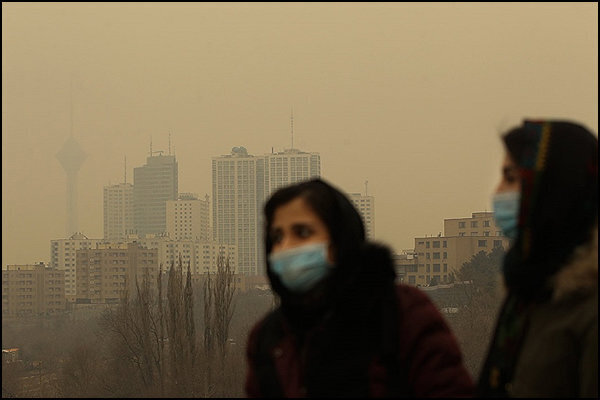COVID-19 increases PM concentration in Tehran by 20%: study

TEHRAN – The results of a study by Iranian researchers shows that the concentration of particulate matter (PM2.5) as the most important pollutant in Tehran air during the coronavirus outbreak has increased by about 20 percent compared to the same period last year.
The research entitled “Impact of SARS-CoV-2 on Ambient Air Particulate Matter in Tehran”, published in the international journal of Aerosol and Air Quality Research.
The pandemic has indirectly produced both positive and negative effects on the environment, particularly in terms of air quality; the study aimed to determine these effects in the city of Tehran by comparing the ambient PM2.5 and PM10 levels recorded at 22 air quality monitoring stations during the outbreak (20 February–2 April 2020) with those from the corresponding period last year (20 February–3 April 2019).
A national social distancing plan started in Iran on March 28 to stop the spread of the virus, which resulted in a 50 to 90 percent reduction in traffic in cities; it not only did not reduce air pollution during spring, but the capital city is still choking on NOX pollutants during the summer.Contrary to expectation, the average concentrations of both the PM2.5 and the PM10 were markedly higher during the former, increasing by 20.5 percent and 15.7 percent, respectively, for the first month of the outbreak (20 February–19 March 2020) and by 23.5 percent and 20.0 percent for the subsequent Noruz New Year holidays (from late March till early April).
However, it resulted in overall increases of 20.5 percent and 16.5 percent for the entire period.
Because of the significant association between the lethality of COVID-19 and exposure to ambient air pollution, the rise in airborne PM2.5 during this outbreak may increase the mortality rate of the disease.
Air pollution haunting Tehran in summer
A national social distancing plan started in Iran on March 28 to stop the spread of the virus, which resulted in a 50 to 90 percent reduction in traffic in cities; it not only did not reduce air pollution during spring, but the capital city is still choking on NOX pollutants during the summer.
Ozone in the lower atmosphere is formed by the reaction of sunlight on air containing hydrocarbons and nitrogen oxides (NOX) that react to form ozone directly at the source of the pollution namely, cars, industry, gas vapors, chemical solvents, fuel combustion.
According to the statistics published by Air Quality Control Company, the Tehran air quality index (AQI) demonstrated 15 days of excellent air since the beginning of this year (March 21), while during the same period last year, Tehraners breathed 25 days of clean air.
An AQI is used to communicate to the public how polluted the air currently is or how polluted it is forecast to become.
The index categorizes conditions according to a measure of polluting matters into excellent (0-50), acceptable (51-100), moderately polluted or unhealthy for sensitive groups (101-150), polluted (151-200), heavily polluted (201-300) and severely polluted (301-500).
This is while, last year over the same period 90 days of acceptable quality air reported in the city, while this year it was reported 91 days.
During the aforementioned period last year, 21 days were moderately polluted, which increased to 29 days this year.
Since March 21, polluted air haunted the capital for 2 days which was almost dangerous for all the residents, while last year Tehraners breathed a day of polluted air.
This is while, last year over the same period 42 days were unhealthy for sensitive groups, and Tehraners did not breathe a single day of heavily polluted air.
The concentration of other pollutants like PM 2.5 and PM 10 in Tehran also has increased in the first month of spring compared to the same period last year.
The leading cause of air pollution in the capital is PM 2.5, PM 10, and Nitrogen Dioxide (NO2).
FB/MG
Leave a Comment